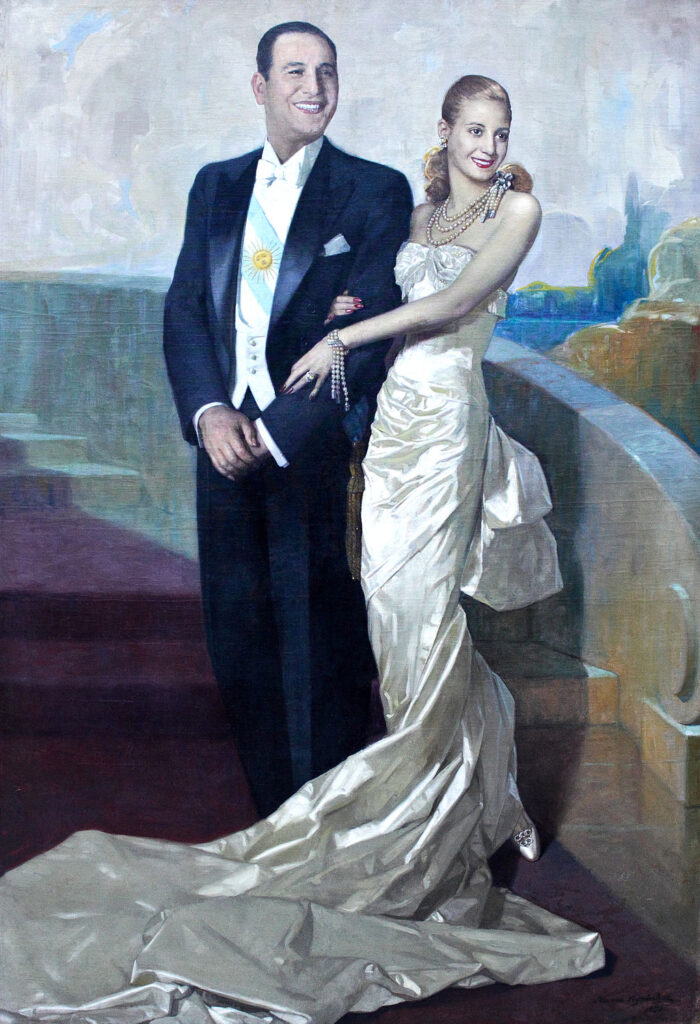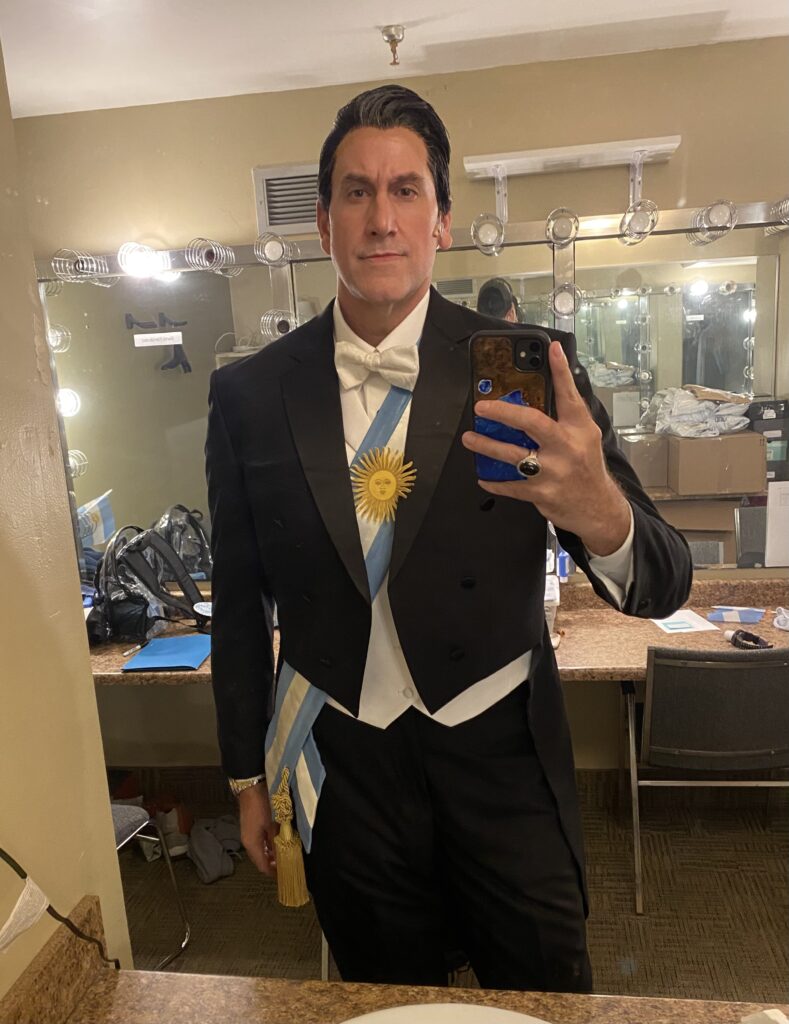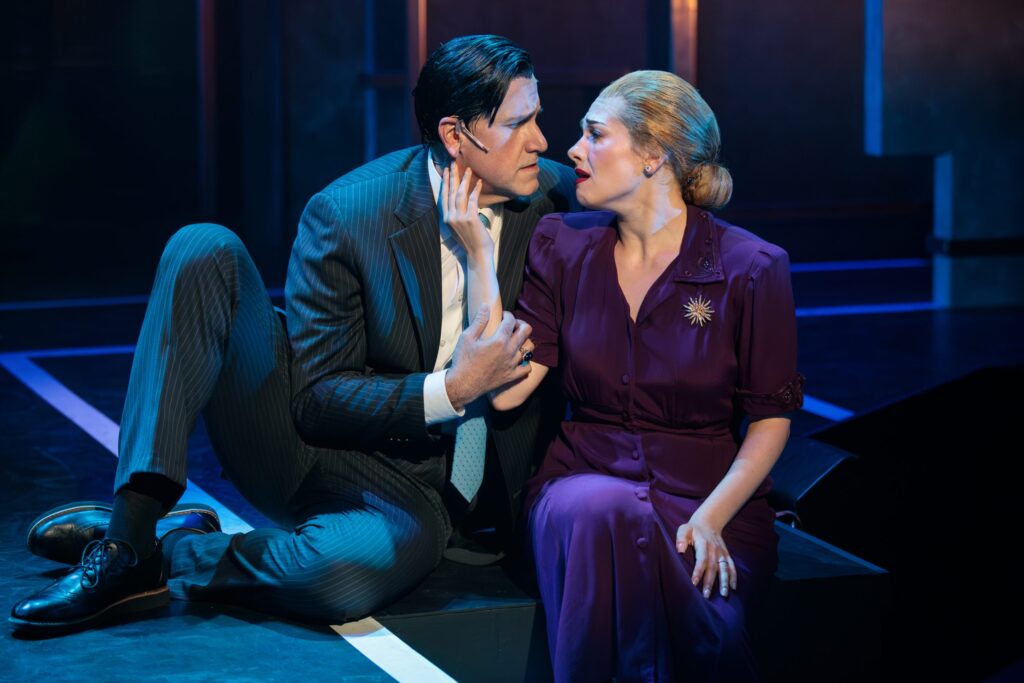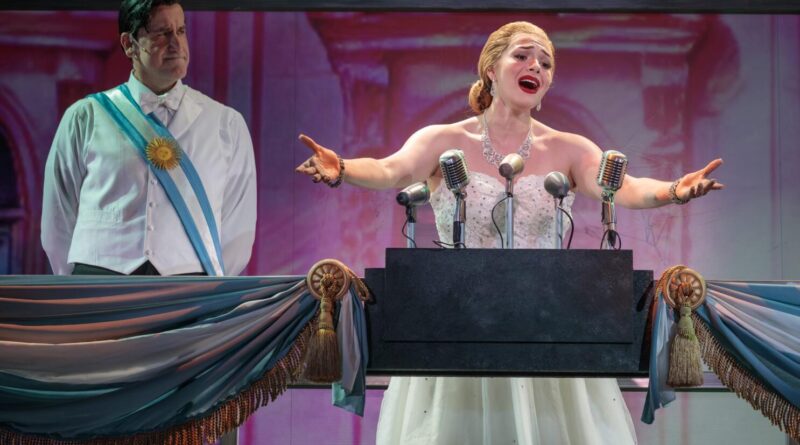Keeping up with the Peróns
By Berto Fernández
There are only a handful of political figures who reached a level of global notoriety and fame making them a household name all over. Juan and Eva Perón are the perfect example. The revered musical Evita by Sir Andrew Lloyd Webber, follows the story of Eva Duarte, as she climbs her way up the social and political ladder to become the First Lady of Argentina, and one of the most iconic celebrities of our time.
San Diego’s Cygnet Theatre is currently presenting the rarely produced musical, bringing this enthralling, yet controversial story to their stage. I have been cast in the show as former President of Argentina, Juan Perón, and in this feature, I will dive into the process of preparing to portray this historical character in the musical and some highlights of our version.

Eyes, hair, mouth, figure, dress, voice, style, movement.
The first part of the journey, before rehearsals even start, is to research the players of the show. It is hard to believe that this musical was written 47 years ago as a concept album, and two years after in 1978 produced as a full show in London. Composers, directors, and actors at the time only had books to reference the historical elements of these characters, particularly one polarizing book about Eva’s story, called “The Woman with the Whip”. For this particular piece, I was able to benefit from modern technology, as I could look up actual footage of Perón’s
speeches, official portraits and documents, as well as previous productions of the show. In tandem with the show’s director, Sean Murray, we decided how we wanted to portray the Peróns. Historical accuracy was at the forefront of our conversation. As a bald actor, inevitably, I was going to don a wig to have the signature slicked back Perón style. We had also discussed after reviewing footage of other productions, that my Perón would not be stern or angry, as he is generally portrayed, but he should be charming and approachable, as he appears in most archival footage we studied.
Footage of Perón:
He was in the military, so certain “no nonsense” poise was necessary, but he was also a very anxious and depressed man, which I wanted to give hints of throughout my character arc.

Argentinos, Argentinos
One of the main discoveries I made upon listening to different versions of the show, was the pronunciation of the Spanish words that are sung throughout. The two most prominent: Argentina (of course), and descamisados or “shirtless” referring to the group of working-class people who supported Perón and sparked a movement that catapulted him to the presidency. To my surprise, both of these words were incorrectly pronounced in most productions, even by Latine actors. Our cast is mostly of Hispanic descent, so we quickly decided that we would pronounce any Spanish properly, as we are trying to accurately paint this story. We even took it a step further. Why not include some of the official Spanish translations of the score? This, I believe, massively enriches this production, bringing a very deep and personal connection to our culture through language.
Discovering Evita
Throughout rehearsals and tech, the cast navigated the score (the entire show is sung, making it more of a rock opera, than a musical) and we bring our version of Evita to the Cygnet stage. Our choreographer, Carlos Mendoza, included authentic Argentinian Tango movement to some of our scenes to add even more authenticity and relatability to our story. Cygnet is a fairly small house, and we are very close to the audience, so this is a challenge sometimes because you must lean on the honesty of the action, as opposed to showing it. Audiences won’t believe you otherwise. I am also 6’5”, so I find that I can do less movement and it reads better, and even throws the ball back to the audience as they wonder what is actually going through my mind in a particular scene. Historically appropriate costumes also add important details to the show’s aesthetic. I was provided a Presidential pin for my jacket, as well as an authentic sash with the Argentinian colors to wear for my acceptance speech. All these elements are crucial in building our own version of these characters.
The good and the bad
A musical in its roots will be somewhat romanticized so audiences connect with it on an emotional level. We may achieve this through costuming, set pieces, or even hair, like Eva, who changes her wig style and color throughout the show to represent her journey. The fact is that Juan and Eva Perón were not adored by all, their popularity is truly split right down the middle, making the show quite controversial. Some people may argue that there’s no reason to produce a show that reveres and idolizes this conniving political duo. In reality, the musical itself presents both sides too, maybe not as cut and dry, but themes of their opposition from aristocrats and the militia are very dominant. The fact that women at the time were not able to vote, but still had to stand by their male counterparts in their ideology is not lost in our production. The lyrics continuously suggest that Eva manipulates every person (mostly men) who she encounters, but one can’t argue that she was a charismatic and powerful figure that changed the state of a nation.

Don’t Cry for Me
As our exciting run of this show continues, we keep discovering nuances and opportunities throughout the piece to engage the audience and help them through their own journey with the production. Love or hate it, Evita is a dark and compelling show. I particularly love hearing that audience members start Googling certain facts about these politicians to learn more about their unique history.
Evita is presented by Cygnet Theatre in Old Town, now through October 1st. For more info: https://www.cygnettheatre.com/season/2022-2023-season/evita/

